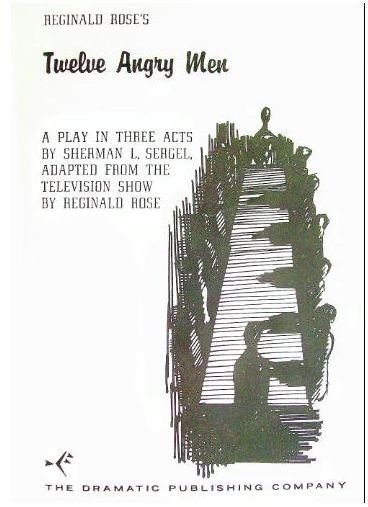12 Angry Men Lesson Plan for Eighth Grade & Up: Getting Ready to Read Drama
We are fortunate to live in a country where those accused of committing a crime are afforded the right to a trial by an impartial jury. But for some jurors, putting aside personal prejudices, pre-conceived notions, and deep-seeded emotions are easier said than done. In Reginald Rose’s play <em>Twelve Angry Men</em>, one juror must convince eleven others that they must act responsibly by fairly considering the evidence in a murder case that could end one young man’s life.
Before reading Twelve Angry Men, introduce students to the elements of drama outlined below and to the importance of reading stage directions. The play can be easily read aloud and is easier for students to follow if each “juror” wears a name tag with his or her juror number or displays a placard with the juror number on his or her desk.
Getting Ready to Read Drama
Terms to Know:
- Script
- Stage Directions
- Scenery
- Props
- Lighting
- Music
- Sound Effects
- Acts
- Scenes
- Dialogue
- Plot Structure: conflict, exposition, rising action, climax, falling action, resolution
- Main Character(s)
- Minor Character(s)
- Foil
- Dynamic Characters
- Static Characters
Plays, like novels, contain major and minor characters, conflict, dialogue and action, but reading a play is a bit different than reading a novel. Since a play is meant to be performed in front of an audience, it is written in a special form called a script.
The script includes stage directions, instructions to help the actors, directors, and stage crew put on the play and to help readers visualize the action. They tell the actors how to speak (what tone of voice to use) and move, describe the scenery (the objects on the stage which help create the setting) and describe the props (the objects the actors use during the play). Stage directions also include suggestions for lighting, music, and sound effects. They are usually written in italics and put in parentheses.
How Plays Are Organized:
The action of a play is divided into acts; acts are further divided into scenes. The scene usually changes whenever the setting changes.
Dialogue:
Unlike novels, plays are almost all dialogue. The conversations between the characters – the words that they speak – reveal the characters’ personalities and also advance the plot.
Plot Structure:
Like a novel, the plot of play often revolves around a conflict. There is an exposition (which introduces the characters, the setting and the conflict), rising action (where the conflict and suspense build), a climax (where the conflict peaks or a turning point exists), falling action (where the suspense and tension lessens) and a resolution (the logical outcome of the plot).
Characters:
The characters in a play can be classified into main characters (most important) and minor characters (less important). Some characters act as foils – they’re the opposite personality type of the main character. For example, if the main character is really funny, the foil may be really serious. Additionally, some characters change over time; they are called dynamic characters; others stay the same and are referred to as static characters.
References
- Image from Amazon.Com
This post is part of the series: Teaching “12 Angry Men”
Reginald Rose explores the ideas of acting responsibly and fairly when considering evidence in a murder case. “12 Angry Men” is suitable for grades 8 and up and is a great introduction to students in reading and understanding drama as well as our legal system.
